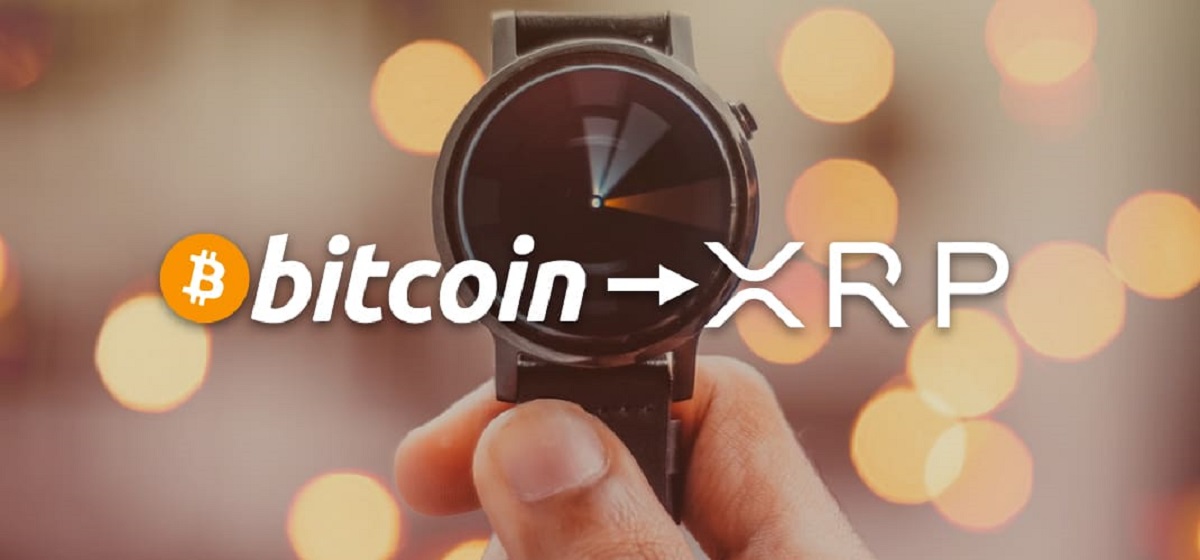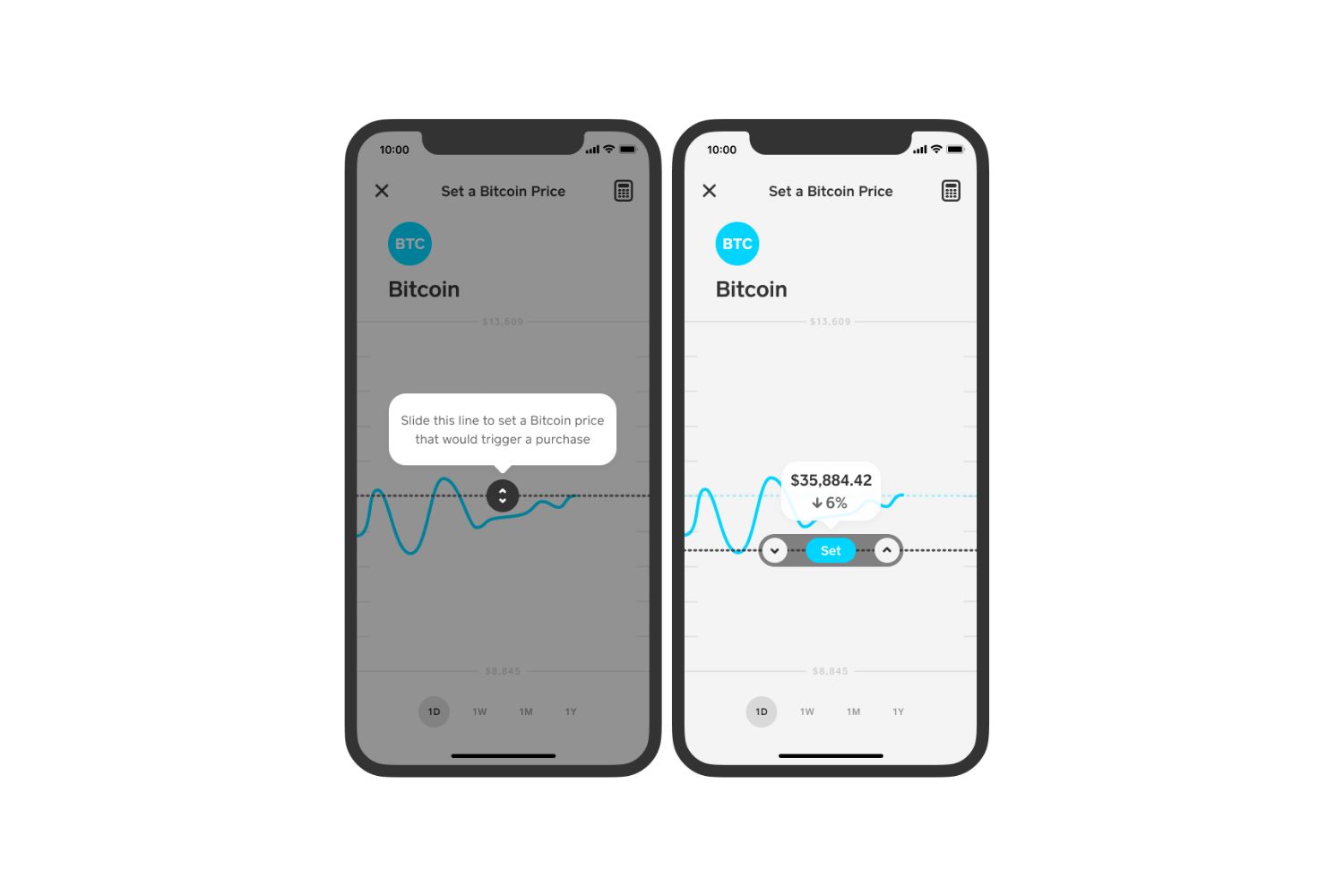Introduction
Welcome to the exciting world of Bitcoin options trading. As the popularity of cryptocurrencies continues to soar, more and more people are looking for ways to capitalize on their potential growth. Bitcoin, being the most well-known and widely used cryptocurrency, presents ample opportunities for traders to profit.
But what exactly are Bitcoin options? In simple terms, options are financial derivatives that give traders the right, but not the obligation, to buy or sell an underlying asset, in this case, Bitcoin, at a predetermined price and within a specified time frame.
Bitcoin options offer traders the ability to speculate on the price movement of Bitcoin without actually owning the coins. This provides a flexible and cost-effective way of trading Bitcoin, allowing traders to participate in the market and potentially profit from both rising and falling prices.
So, why should you consider trading Bitcoin options? There are several compelling reasons. Firstly, options trading provides leverage, allowing you to control a larger position with a smaller amount of capital. This can amplify your potential profits, but it’s important to note that it can also increase your losses.
Secondly, options offer flexibility. Unlike traditional spot trading where you need to buy or sell the underlying asset, options give you the freedom to choose whether to exercise the option or let it expire. This flexibility allows you to adapt your trading strategy based on market conditions and your own risk appetite.
Thirdly, options provide risk management tools. By using options, you can protect your portfolio from downside risk or potentially generate income from your existing holdings. Options can act as portfolio insurance and provide hedging opportunities, making them a valuable tool for risk management.
However, it’s important to note that trading options involves risks, and it requires a solid understanding of the market, as well as a well-defined trading strategy. It’s crucial to do thorough research and educate yourself on the intricacies of options trading before getting started.
In the following sections, we will delve deeper into the world of Bitcoin options trading. We will explore key terms and definitions, discuss how to choose the right options exchange and set up a trading account, and provide insights into reading options charts and developing a trading strategy.
So, if you’re ready to embark on this exciting journey of Bitcoin options trading, let’s delve deeper and discover the strategies and techniques that can help you maximize your profits in this dynamic market.
What are Bitcoin options?
Bitcoin options are financial derivatives that provide traders with the opportunity to speculate on the price movement of Bitcoin without owning the underlying asset. Put simply, an option is a contract that gives the holder the right, but not the obligation, to buy or sell an underlying asset at a predetermined price within a specified time frame.
In the case of Bitcoin options, the underlying asset is Bitcoin. Traders can choose between two types of options: call options and put options. A call option gives the holder the right to buy Bitcoin at a specific price, known as the strike price, on or before the expiration date of the option. On the other hand, a put option gives the holder the right to sell Bitcoin at the strike price.
Bitcoin options provide traders with the flexibility to profit from both rising and falling prices. If you believe that the price of Bitcoin will increase, you can purchase a call option and potentially make a profit by exercising the option and buying Bitcoin at a lower price than the prevailing market price. Conversely, if you anticipate that the price of Bitcoin will decrease, you can purchase a put option and profit by selling Bitcoin at a higher price than the market price.
It’s important to note that options have an expiration date, after which they become worthless. This means that if the price of Bitcoin doesn’t move in the expected direction before the option expires, the trader may lose the premium paid for the option.
Bitcoin options trading provides several advantages for traders. First and foremost, it allows for leverage, meaning that traders can control a larger position with a smaller investment. This amplifies potential profits, but it’s important to remember that it can also magnify losses.
Furthermore, options provide flexibility in terms of execution. Traders can choose to exercise the option and buy or sell Bitcoin, or they can simply let the option expire. This gives traders the opportunity to adapt their strategies based on market conditions and their own risk tolerance.
Bitcoin options trading also offers risk management tools. By using options, traders can protect their portfolios from downside risk or generate income from existing holdings. Options can act as insurance for a portfolio or provide hedging opportunities, allowing traders to mitigate potential losses or generate additional profits.
Overall, Bitcoin options provide traders with a versatile and cost-effective way to participate in the cryptocurrency market. However, it’s important to approach options trading with caution and to thoroughly understand the risks involved. With the right knowledge, strategy, and risk management techniques, Bitcoin options trading can be a rewarding endeavor.
Why trade Bitcoin options?
Bitcoin options trading offers several advantages that make it an attractive choice for traders in the cryptocurrency market. Let’s explore some of the key reasons why you should consider trading Bitcoin options.
1. Leverage: One of the primary reasons traders are drawn to Bitcoin options is the ability to control a larger position with a smaller capital investment. Options provide leverage, allowing traders to amplify their potential profits. With leverage, even a small price movement in the underlying asset can result in significant gains. However, it’s important to note that leverage can also magnify losses, so risk management is crucial when trading options.
2. Flexibility: Bitcoin options provide traders with flexibility in terms of execution. Unlike spot trading, where you need to buy or sell the underlying asset, options give you the choice to exercise the option or let it expire. This flexibility allows you to adapt your trading strategy based on market conditions and your risk tolerance. You can capitalize on both upward and downward price movements, and adjust your positions as the market evolves.
3. Risk management: Options are valuable tools for risk management. By using options, you can protect your portfolio from downside risk or generate income from your existing holdings. Options can act as insurance for your portfolio, providing a level of protection against adverse price movements. Additionally, options allow for hedging strategies, which can mitigate potential losses or generate additional profits. Effective risk management is essential in options trading, and having the ability to control risk is a significant advantage.
4. Diversification: Trading Bitcoin options allows you to diversify your investment portfolio. By adding options to your trading strategy, you can engage in different market scenarios and potentially profit in various market conditions. This diversification can help reduce overall risk and enhance your portfolio’s resilience.
5. Lower barriers to entry: Compared to traditional investment vehicles, Bitcoin options trading has lower barriers to entry. You don’t need to own the underlying asset itself, which means you can participate in the market with a smaller capital investment. This accessibility makes options trading more inclusive and allows individuals with limited funds to still engage in the cryptocurrency market.
6. Market volatility: The cryptocurrency market, including Bitcoin, is known for its volatility. Volatility creates opportunities for traders to profit, and options trading can be particularly advantageous in this environment. Options offer the potential for significant returns during periods of price fluctuations, as the value of options is influenced by both price movement and volatility. However, it’s essential to note that volatility also increases the risk, so careful analysis and risk management are crucial.
Overall, Bitcoin options trading provides a range of benefits for traders, including leverage, flexibility, risk management, diversification, lower entry barriers, and the potential to capitalize on market volatility. However, it’s important to remember that options trading involves risks, and a thorough understanding of the market, coupled with effective risk management strategies, is crucial for success.
Understanding call and put options
When it comes to trading Bitcoin options, it’s important to have a clear understanding of call options and put options. These two types of options provide the foundation for options trading and offer different opportunities for traders. Let’s explore the key characteristics of call and put options in detail.
Call options: A call option gives the holder the right, but not the obligation, to buy the underlying asset, in this case, Bitcoin, at a predetermined price within a specified time frame. This predetermined price is known as the strike price. If the price of Bitcoin exceeds the strike price before the option’s expiration date, the call option becomes profitable.
For example, let’s say the current price of Bitcoin is $50,000, and you purchase a call option with a strike price of $55,000 expiring in one month. If, during that month, the price of Bitcoin rises above $55,000, you can exercise the option and buy Bitcoin at the lower strike price. This allows you to profit from the difference between the strike price and the market price.
If, however, the price of Bitcoin remains below the strike price, the call option will expire worthless. In this case, you would lose the premium paid for the option but would not be obligated to buy Bitcoin at the higher strike price.
Call options are typically utilized when traders anticipate that the price of Bitcoin will increase. It provides an opportunity to profit from upward price movements without actually owning the underlying asset.
Put options: On the other hand, a put option gives the holder the right, but not the obligation, to sell the underlying asset, in this case, Bitcoin, at a predetermined price within a specified time frame. Again, the strike price determines the price at which the option can be exercised.
Continuing with the example above, if you purchase a put option with a strike price of $45,000 and the price of Bitcoin falls below this strike price, you can exercise the option and sell Bitcoin at the higher strike price. This allows you to profit from the difference between the strike price and the market price.
If, however, the price of Bitcoin remains above the strike price, the put option will expire worthless. In this case, you would lose the premium paid for the option but would not be obligated to sell Bitcoin at the lower strike price.
Put options are typically used when traders anticipate that the price of Bitcoin will decrease. It provides an opportunity to profit from downward price movements without actually owning the underlying asset.
Understanding the concepts of call and put options is essential for successful options trading. By utilizing these types of options effectively, traders can take advantage of both rising and falling markets, expanding their range of trading opportunities.
It’s important to note that options trading can be complex, and it’s crucial to have a thorough understanding of the market, as well as a sound trading strategy, before engaging in options trading.
Key terms and definitions
When it comes to trading Bitcoin options, there are several key terms and definitions that you need to be familiar with. Understanding these terms is crucial for navigating the options market effectively. Let’s explore some of the essential terms and definitions related to Bitcoin options trading.
1. Strike price: The strike price, also known as the exercise price, is the predetermined price at which the underlying asset can be bought or sold when exercising an option. It serves as a reference point for determining the profitability of an option.
2. Premium: The premium is the price paid by the buyer of an option to the seller. It represents the cost of purchasing the option and is influenced by factors such as the current price of Bitcoin, the strike price, the time remaining until expiration, and market volatility.
3. Expiration date: The expiration date is the date at which an option contract expires. After this date, the option is no longer valid and cannot be exercised. It’s important to be aware of the expiration date when entering into an options contract.
4. In-the-money: An option is considered in-the-money when there is a profit to be gained from exercising the option. For call options, this means the current market price of Bitcoin is higher than the strike price. For put options, it means the current market price is lower than the strike price.
5. Out-of-the-money: An option is considered out-of-the-money when there is no immediate benefit to exercising the option. For call options, this means the current market price of Bitcoin is lower than the strike price. For put options, it means the current market price is higher than the strike price.
6. At-the-money: An option is considered at-the-money when the current market price of Bitcoin is equal to the strike price. In this scenario, there is no immediate profit to be gained from exercising the option.
7. American style and European style: These terms refer to the exercise style of options. American-style options can be exercised at any time before the expiration date, while European-style options can only be exercised on the expiration date.
8. Implied volatility: Implied volatility is a measure of the market’s expectation of future volatility. It is a key component in determining the price of options. Higher implied volatility generally leads to higher option premiums.
9. Liquidity: Liquidity refers to the ease with which an option can be bought or sold without significantly impacting its price. A liquid options market allows for efficient trading and tighter bid-ask spreads.
These are just a few of the key terms and definitions that are important to understand when trading Bitcoin options. Familiarizing yourself with these terms will help you navigate the options market more effectively and make informed trading decisions.
It’s important to continue learning and staying updated on the ever-evolving landscape of options trading to enhance your understanding and proficiency in this market.
Choosing the right Bitcoin options exchange
When venturing into Bitcoin options trading, choosing the right exchange is a critical decision that can significantly impact your trading experience. Here are some key factors to consider when selecting a Bitcoin options exchange.
1. Reputation and security: The reputation and security of the exchange should be paramount in your decision-making process. Look for exchanges that have a solid track record and are known for their robust security measures. Ensure that the exchange employs stringent security protocols such as two-factor authentication and cold storage of funds.
2. Available options: Different exchanges may offer varying types of Bitcoin options contracts. It’s essential to choose an exchange that provides the types of options you are interested in trading, such as call options or put options, with various expiration dates and strike prices. The more options available, the greater the flexibility in executing your trading strategy.
3. User interface and trading experience: A user-friendly and intuitive trading interface can enhance your overall trading experience. Consider exchanges with platforms that are easy to navigate, provide real-time market data, and offer comprehensive options trading tools and charts. A smooth and seamless trading experience can save you time and help you execute trades more efficiently.
4. Liquidity: Liquidity is a crucial aspect of any trading market, including options. Higher liquidity ensures that there are enough buyers and sellers to execute trades at fair prices. Look for exchanges with a reasonable level of liquidity to ensure that you can enter and exit positions without significant slippage. Low liquidity can result in wider bid-ask spreads and make it challenging to get favorable prices.
5. Fees and costs: Exchanges typically charge fees for trading Bitcoin options. It’s important to understand the fee structure of the exchange you choose and how it aligns with your trading style and volume. Look for exchanges with competitive fee rates and transparent fee structures. Consider factors such as trading fees, deposit and withdrawal fees, and any additional charges that may impact your trading profitability.
6. Regulation and compliance: Make sure that the Bitcoin options exchange you choose operates in a regulated environment and complies with relevant laws and regulations. Regulation provides a level of oversight and protection for traders, giving you confidence in the security and integrity of the exchange.
7. Customer support: Having reliable customer support can be crucial, especially when you encounter technical issues or have questions regarding your trades. Look for exchanges that offer responsive and knowledgeable customer support channels, such as live chat, email, or phone support. Prompt and helpful customer support can make a significant difference in resolving any concerns that may arise during your trading journey.
Considering these factors, conduct thorough research and read reviews from other traders to gather insights and make an informed decision. It’s also a good idea to test the exchange’s features and functionality with a small amount of funds before committing significant capital.
Remember, choosing the right Bitcoin options exchange sets the foundation for your trading success. Take the time to evaluate your options carefully, and ultimately select an exchange that aligns with your trading goals, preferences, and risk appetite.
Setting up a trading account
Setting up a trading account is an essential step in getting started with Bitcoin options trading. Here are the key steps to follow when establishing your trading account.
1. Research and choose a reputable exchange: Begin by researching different Bitcoin options exchanges and selecting a reputable and reliable platform. Look for exchanges that have a strong track record, robust security measures, and a user-friendly interface.
2. Sign up on the exchange: Visit the chosen exchange’s website and click on the “Sign Up” or “Register” button. Fill out the required information, which may include your name, email address, and password. Some exchanges may have additional verification steps, such as providing identification documentation to comply with KYC (Know Your Customer) requirements.
3. Complete the verification process: Depending on the exchange’s policies, you may need to complete a verification process to activate your trading account fully. This may involve providing additional personal information and submitting verification documents, such as a government-issued ID or proof of address.
4. Set up two-factor authentication (2FA): Enable two-factor authentication on your trading account for an extra layer of security. This typically involves linking your account to a mobile app or receiving SMS codes to verify your identity when logging in or making account changes.
5. Secure your account: Take additional steps to secure your trading account. Use a strong and unique password, enable email notifications for account activity, and consider using a hardware wallet or cold storage for keeping your funds safe.
6. Familiarize yourself with the trading interface: Spend time exploring the trading interface of the exchange. Familiarize yourself with the different features, charts, order types, and trading tools available. Experiment with the demo mode if the exchange offers one to practice trading strategies without risking real funds.
7. Deposit funds into your account: Deposit funds into your trading account to start trading Bitcoin options. Exchanges typically offer various funding options, including bank transfers, credit/debit card payments, or cryptocurrency deposits. Follow the specific instructions provided by the exchange to deposit funds successfully.
8. Understand the exchange’s fee structure: Take the time to understand the fee structure of the exchange, including trading fees, deposit and withdrawal fees, and any other charges that may apply. Being aware of the fees involved will help you plan and manage your trading costs effectively.
9. Practice risk management: Before diving into live trading, it’s crucial to have a clear risk management strategy in place. Define your risk tolerance, set stop-loss orders, and determine your position sizing to protect your capital and minimize potential losses.
Remember, each exchange may have its own specific steps and requirements to set up a trading account. It’s essential to carefully follow the instructions provided by the exchange to ensure a smooth account setup process.
Once your trading account is set up and funded, you’ll be ready to dive into the exciting world of Bitcoin options trading. Continuously educate yourself, stay updated with market trends, and refine your trading strategy to make informed and calculated trading decisions.
Funding your trading account
After setting up your Bitcoin options trading account, the next step is to fund it with the necessary capital. Here’s a guide on how to effectively fund your trading account:
1. Select a funding method: Determine the funding method that best suits your needs and preferences. Exchanges typically offer options such as bank transfers, credit/debit card payments, or cryptocurrency deposits. Consider factors such as transaction fees, processing times, and available funding options when making your decision.
2. Verify funding requirements: Some exchanges may have specific requirements for funding your account. For instance, they may ask for a specific minimum deposit amount or require you to use a specific payment method. Ensure that you understand and meet these requirements before initiating the funding process.
3. Link your bank account or payment method: If you choose to fund your trading account via bank transfer or credit/debit card, you’ll likely need to link your bank account or payment method to your trading account. Follow the exchange’s instructions to complete the verification process and establish the necessary connections.
4. Initiate the deposit: Once your account and funding method are set up, you can initiate the deposit process. Input the desired deposit amount and follow the prompts to complete the transaction. Depending on the funding method, the processing time may vary, ranging from a few minutes to several business days.
5. Monitor the deposit: Keep an eye on your trading account to confirm that the deposit has been successfully credited. The exchange should provide a balance summary reflecting the deposited funds. If there are any issues or delays, contact customer support for assistance.
6. Calculate your available trading capital: With the funds in your trading account, calculate the available trading capital after accounting for any deposit fees or transaction costs. Having a clear idea of your trading capital will help you make well-informed trading decisions and manage your risk effectively.
7. Start trading: Once your trading account is funded and you have confirmed the availability of funds, you’re ready to start trading Bitcoin options. Spend time analyzing the market, developing a trading strategy, and familiarizing yourself with the trading platform’s features before executing your first trade.
8. Regularly review and replenish your trading account: As you engage in active trading, it’s important to regularly review your account balance. Monitor your trading performance, track your gains and losses, and replenish your trading account as needed to maintain your desired trading capital.
Remember, funding your trading account is a necessary step to participate in Bitcoin options trading. Ensure that you allocate funds that you can afford to invest, keeping in mind the potential risks involved in trading options. Having a well-funded trading account will enable you to seize trading opportunities and capitalize on potential market movements.
Learning how to read options charts
Reading options charts is an essential skill for successful Bitcoin options trading. Options charts provide visual representations of price movements, trends, and key data points that can guide your trading decisions. Here are some important aspects to consider when learning how to read options charts:
1. Timeframe and intervals: Options charts offer different timeframes and intervals, allowing you to analyze price movements over various periods. Common timeframes include minutes, hours, days, weeks, or months. Choose a timeframe that aligns with your trading strategy and matches your preferred trading style.
2. Price axis and scale: The price axis on an options chart represents the price levels of the underlying asset, in this case, Bitcoin. The scale of the price axis can be linear or logarithmic, depending on the charting software. Linear scales display equal price increments, while logarithmic scales represent percentage changes. Understanding the scale used in the chart helps in assessing price movements accurately.
3. Candlestick patterns: Candlestick charts are commonly used to represent options data. Candlesticks display the opening, closing, high, and low prices for each timeframe. Specific patterns formed by the candlesticks, such as doji, hammer, or engulfing patterns, can indicate potential reversals or continuations in the price trend.
4. Trends and trendlines: Analyzing trends in options charts is crucial for identifying the overall market direction. A trend can be upward (bullish), downward (bearish), or sideways (consolidation). Drawing trendlines on the chart helps visualize the trend and identify potential support and resistance levels.
5. Support and resistance levels: Support levels indicate price levels at which buying pressure is expected to push the price up. Resistance levels, on the other hand, indicate price levels at which selling pressure is expected to push the price down. Identifying these levels helps determine potential entry and exit points for options trades.
6. Volume and open interest: Volume represents the number of options contracts traded during a given timeframe. Higher volume indicates increased market activity and liquidity. Open interest refers to the total number of outstanding options contracts. Analyzing volume and open interest can provide insights into market sentiment and potential areas of price reversals or continuation.
7. Technical indicators: Options charts often incorporate various technical indicators, such as moving averages, RSI (Relative Strength Index), MACD (Moving Average Convergence Divergence), or Bollinger Bands. These indicators help identify trends, overbought or oversold conditions, and potential price reversals. Familiarize yourself with the commonly used indicators and their interpretations to enhance your chart analysis.
8. Periodic market news: Stay informed about relevant market news and events that can impact Bitcoin’s price, as they may be reflected in options charts. Major news announcements, regulatory changes, or significant market developments can cause price volatility and affect options prices.
Remember, reading options charts is a skill that develops with practice and experience. Regularly analyze charts, study historical price patterns, and observe how they correlate with market events. Combine chart analysis with fundamental analysis to make well-informed trading decisions and increase your chances of success in Bitcoin options trading.
Identifying support and resistance levels
Identifying support and resistance levels is a crucial aspect of technical analysis in Bitcoin options trading. Support levels indicate price levels at which buying pressure is expected to push the price up, while resistance levels indicate price levels at which selling pressure is expected to push the price down. Here are key considerations when identifying support and resistance levels:
1. Historical price levels: Look at historical price action to identify significant price levels where Bitcoin has either reversed or consolidated in the past. These levels can act as future support or resistance areas. Pay attention to price levels where price movements paused, reversed, or had strong reactions in terms of volume and market behavior.
2. Drawing trendlines: Draw trendlines on the options chart to connect higher lows or lower highs. An upward-sloping trendline acts as a support level, while a downward-sloping trendline acts as a resistance level. Trendline breaks or bounces can be strong indicators of potential support or resistance zones.
3. Psychological levels: Psychological levels often have an impact on human emotions and trader behavior. Round numbers, such as $10,000 or $50,000, tend to act as support or resistance levels as they are psychologically significant. Traders often place buy or sell orders near these levels, resulting in increased trading activity.
4. Moving averages: Moving averages are commonly used to identify support and resistance levels. A rising moving average can act as support, while a declining moving average can act as resistance. Traders often look for price bounces or breaks at these moving averages to confirm support or resistance levels.
5. Fibonacci retracements: Fibonacci retracement levels are based on mathematical ratios that are often used to identify potential support and resistance levels. Traders use the Fibonacci retracement tool to draw horizontal lines at key levels, such as 38.2%, 50%, and 61.8%, based on the Fibonacci sequence. These levels can indicate areas of potential price reversals or bounces.
6. Volume and open interest: Analyzing volume and open interest at specific price levels can help identify support and resistance zones. Higher volume or significant changes in open interest near a price level indicate increased trader activity and the potential for strong support or resistance.
7. Confirmation from other indicators: Utilize other technical indicators, such as oscillators or chart patterns, to confirm support or resistance levels identified through price analysis. For example, an oversold condition in the RSI (Relative Strength Index) or the formation of a double top pattern may strengthen the significance of a resistance level.
8. Monitor price reactions: Continuously observe how price reacts at identified support and resistance levels. Look for price bounces, breaks, or consolidation around these levels. The more times a price level is respected, the stronger it becomes as support or resistance.
Remember that support and resistance levels are dynamic and can change as market conditions evolve. Regularly review and adjust your analysis to account for new price data and changing market trends. Combining support and resistance analysis with other technical indicators and fundamental analysis can enhance your overall trading strategy in Bitcoin options trading.
Developing a trading strategy
Developing a trading strategy is a vital step in becoming a successful Bitcoin options trader. A well-defined strategy helps guide your decision-making process, manage risk, and increase your chances of consistently profitable trades. Here are key considerations when developing a trading strategy:
1. Define your goals and risk tolerance: Clearly define your trading goals and objectives. Are you looking for short-term gains or long-term investments? Determine your risk tolerance level, as this will influence the types of trades you take and the position sizes you choose.
2. Choose your trading style: Decide on a trading style that aligns with your personality and preferences. Are you more comfortable with day trading, swing trading, or long-term position trading? Each style has its advantages and requires specific strategies and time commitments.
3. Conduct thorough market analysis: Stay informed about market trends, news, and events that can impact Bitcoin’s price. Perform technical analysis by examining charts, identifying trends, support and resistance levels, and using indicators. Combine technical analysis with fundamental analysis, such as monitoring regulatory developments or macroeconomic factors, to gain a holistic view of the market.
4. Set entry and exit criteria: Develop clear criteria for entering and exiting trades. Determine the conditions that need to be met for you to open a position, such as specific chart patterns, indicator confirmations, or breakout levels. Likewise, define your criteria for exiting a trade, whether it’s profit targets, stop-loss levels, or trailing stops, to ensure disciplined and objective decision-making.
5. Manage risk effectively: Implement risk management techniques to protect your capital. Determine your position sizing based on your risk tolerance and calculate the appropriate trade size for each position. Consider using stop-loss orders to limit potential losses and take-profit orders to secure profits. Regularly assess and adjust your risk exposure as market conditions change.
6. Test and refine your strategy: Practice your trading strategy using simulated trading or a demo account to test its effectiveness. Track and analyze the performance of your trades, identifying strengths and weaknesses in your strategy. Continuously refine and adapt your strategy based on your findings to enhance its profitability.
7. Stay disciplined and manage emotions: Stick to your trading strategy and avoid impulsive decisions driven by emotions. Emotions like greed and fear can cloud judgment and lead to irrational trading choices. Set realistic expectations, understand that losses are a part of trading, and remain disciplined in your approach.
8. Keep a trading journal: Maintain a trading journal to record your trades, including entry and exit points, reasons for taking each trade, and the outcome. Regularly review your journal to assess your performance, identify patterns, and learn from your experiences. This helps you refine your strategy and develop consistency in your trading approach.
Remember, no trading strategy is foolproof, and there will be ups and downs in your trading journey. Continuously educate yourself, adapt your strategy to changing market conditions, and never stop learning from both successful and unsuccessful trades. The development and refinement of your trading strategy is an ongoing process that evolves as you gain experience and grow as a trader.
Managing risk in Bitcoin options trading
Managing risk is a crucial aspect of Bitcoin options trading, as it helps protect your capital and increase the likelihood of long-term trading success. Here are key considerations for effectively managing risk in Bitcoin options trading:
1. Determine your risk tolerance: Before entering any trade, thoroughly assess your risk tolerance. Understand how much capital you are willing to risk on each trade and ensure your trading decisions align with your risk tolerance level. Avoid overexposing yourself to the market, as this can lead to significant losses.
2. Implement risk management techniques: Utilize risk management techniques to protect your capital. Consider implementing stop-loss orders to automatically exit a trade if it reaches a predetermined price level. Set profit targets to secure gains and prevent greed from guiding your decisions. Trailing stops can also be employed to lock in profits as the price moves in your favor.
3. Proper position sizing: Determine the appropriate position size for each trade based on your risk tolerance. Avoid allocating a large portion of your trading capital to a single trade, as this can result in substantial losses if the trade goes against you. Consider using a percent risk model where you risk a predetermined percentage of your capital on each trade.
4. Diversify your trades: Spread your risk by diversifying your trades across different assets, timeframes, and strategies. By diversifying, you reduce the impact of a single trade or market event on your overall portfolio. Diversification can help mitigate potential losses and increase the stability of your trading results.
5. Stay informed: Keep up-to-date with relevant market news and events that can impact Bitcoin’s price. Major news announcements or regulatory changes can induce significant volatility in the market. Staying informed allows you to assess potential risks and adjust your trading decisions accordingly.
6. Continuously monitor your trades: Regularly review and monitor your open positions. Assess their performance and make adjustments as needed. If a trade is showing signs of consistently moving against you, consider closing the position to limit your losses. Constant monitoring helps you make timely decisions and avoid substantial drawdowns.
7. Never risk more than you can afford to lose: Set a maximum risk threshold, and never risk more capital than you can comfortably afford to lose. Trading involves inherent risks, and even the most experienced traders incur losses. By preserving your capital and being disciplined in your risk management, you can continue trading with confidence.
8. Learn from your trades: Every trade provides an opportunity for learning. Keep a trading journal to record your trades, including entry and exit points, reasoning, and outcomes. Analyze your trades to identify patterns, strengths, and weaknesses. Learn from both successful and unsuccessful trades to refine your trading strategy and improve your overall risk management approach.
Remember, risk is an integral part of trading, and it’s important to manage it effectively. By implementing sound risk management techniques, maintaining discipline, and continuously learning and adapting, you can navigate the risks inherent in Bitcoin options trading and increase your potential for success.
Executing Bitcoin options trades
Executing Bitcoin options trades requires careful planning and precise execution. Here are key steps to follow when executing your Bitcoin options trades:
1. Analyze the market: Begin by conducting a thorough analysis of the market. Review options charts, identify trends, support and resistance levels, and relevant technical indicators. Consider any fundamental factors that may impact Bitcoin’s price, such as news announcements or regulatory developments. This analysis will inform your trading decisions.
2. Define your trading strategy: Based on your market analysis, define your trading strategy and entry criteria. Determine the specific conditions that need to be met for you to initiate a trade, whether it’s a breakout, a specific chart pattern, or a combination of technical indicators. Having a clear plan helps you make objective trading decisions.
3. Choose the appropriate options contract: Select the options contract that aligns with your trading strategy and preferred timeframe. Consider factors such as expiration date, strike price, and the contract’s liquidity. Ensure that the options contract provides the necessary flexibility to execute your desired trading strategy.
4. Place the trade: Once you have selected the desired options contract, place the trade through your chosen exchange’s trading platform. Specify the contract, quantity, expiration date, and strike price. Carefully review the order details to ensure accuracy before finalizing the trade.
5. Determine the trade size: Decide on the appropriate trade size based on your risk management strategy and position sizing. Consider your risk tolerance and the amount of capital you are willing to allocate to the trade. Avoid overexposing yourself by risking more capital than you can comfortably afford to lose.
6. Monitor the trade: After entering the trade, closely monitor its progress. Monitor the price movement of the underlying asset, as well as any changes in market conditions. remain aware of any potential catalysts or events that may affect the options contract’s value. Continuously reassess the trade’s performance against your initial analysis and adjust your strategy if needed.
7. Manage the trade: Depending on the market conditions and your trading strategy, you may need to manage the trade by adjusting your stop-loss levels, trailing stops, or taking profit targets. Continuously reassess the risk-reward ratio of the trade and make appropriate adjustments to protect your capital and maximize potential profits.
8. Close the trade: When the trade reaches your predetermined exit criteria, whether it’s a profit target or a stop-loss level being hit, close the trade. Execute the exit order through your exchange’s trading platform. Ensure that the trade closure aligns with your risk management strategy and trading plan.
Remember, executing Bitcoin options trades requires discipline and adherence to your trading strategy. Continuously refine your approach through practice and learning from your trades. By following a systematic and well-defined process, you can improve your execution skills and increase your chances of successful Bitcoin options trading.
Monitoring and adjusting your trades
Monitoring and adjusting your trades is a critical aspect of successful Bitcoin options trading. It involves actively managing your open positions to ensure that they align with market conditions and your trading objectives. Here are key considerations for monitoring and adjusting your trades:
1. Regularly review your trades: Continuously monitor the performance of your open positions. Regularly review charts, technical indicators, and market news to stay informed about market conditions. Assess whether the trade is moving in the expected direction and evaluate its overall profitability.
2. Set clear exit criteria: Define clear exit criteria for each trade before entering it. This can include profit targets, stop-loss levels, or trailing stops. Having predefined exit criteria allows for a disciplined approach to trade management and helps prevent emotional decision-making.
3. Adjust stop-loss levels: As the trade progresses, consider adjusting your stop-loss levels to protect your capital and lock in profits. If the trade is moving in your favor, you may want to tighten the stop-loss level to secure the gains already made. This way, you protect your profits and reduce the risk of a sudden reversal.
4. Trail your stops: If the trade continues to move in your favor, consider using trailing stops. A trailing stop sets a dynamic stop-loss level that adjusts as the price moves in your favor. This allows you to capture more profits if the price continues to rise while still protecting against a significant reversal.
5. Stay informed about market news: Stay updated on news and events that may impact Bitcoin’s price. Major announcements, regulatory changes, or economic reports can affect market sentiment and influence price movements. Remaining informed allows you to anticipate potential shifts in market conditions and adjust your trades accordingly.
6. Reassess risk-reward ratios: Continuously assess the risk-reward ratios of your trades. If a trade becomes increasingly risky or its potential reward diminishes, determine whether it’s still worth holding the position. It may be necessary to exit the trade if the risk is no longer justified or if better opportunities arise.
7. Adapt to changing market conditions: Markets are dynamic, and conditions can rapidly change. Be flexible and adaptable in your trade management. If market conditions shift or new information emerges that conflicts with your initial analysis, be open to adjusting or even closing the trade to mitigate potential losses or take advantage of new opportunities.
8. Keep emotions in check: Emotions can impact trading decisions. Avoid making impulsive decisions driven by fear or greed. Stick to your trading plan and follow your predefined rules for exit criteria. Continuously remind yourself of your trading strategy and risk management principles to maintain discipline.
Monitoring and adjusting your trades require active involvement and constant evaluation. Regularly review your positions, assess risk-reward ratios, and adjust your stop-loss levels as necessary. Stay informed, remain vigilant, and adapt to changing market conditions to maximize your trading results in the dynamic world of Bitcoin options trading.
Closing out and taking profits
Closing out and taking profits is a crucial step in Bitcoin options trading. Knowing when to exit a trade and secure your gains is essential for successful trading. Here are key considerations when closing out your trades and capturing profits:
1. Define profit targets: Before entering a trade, establish clear profit targets. Determine the price level or percentage gain you want to achieve and set it as your target. Having predefined profit targets allows you to maintain discipline and prevent greed from driving your decision-making.
2. Regularly assess trade performance: Continuously monitor the performance of your open positions. Regularly review charts, technical indicators, and relevant news. Assess whether the trade is reaching your profit targets or if there are signs of a potential reversal or loss of momentum.
3. Trailing stop orders: Consider using trailing stop orders to protect your profits. A trailing stop order is set at a specific percentage or price level below the current market price. As the price rises, the trailing stop moves up, locking in profits if the market reverses. This allows you to capture additional gains while managing potential downside risk.
4. Adjust stop-loss levels: As the price moves in your favor, adjust your stop-loss level to protect your profits. Moving the stop-loss order closer to the current market price minimizes the risk of giving back your gains in the event of a reversal. It allows you to secure a portion of your profits and reduce the overall risk exposure of the trade.
5. Scale out of trades: Consider scaling out of your trades by gradually closing a portion of your position as the price moves in your favor. This strategy allows you to secure some profits while still keeping a portion of your position open to potentially capture further gains if the price continues to rise.
6. Assess risk-reward ratio: Continuously assess the risk-reward ratio of your open positions. If the potential rewards have diminished significantly compared to the risks, it may be advisable to consider closing the trade and taking your profits. Make rational decisions based on sound risk management principles.
7. Follow your trading plan: Stick to your predefined trading plan and exit criteria. Avoid making impulsive decisions based on emotions or short-term fluctuations. Trust in your initial analysis and trading strategy. Emotional decision-making can lead to missed profit opportunities or unnecessary losses.
8. Regularly review and analyze closed trades: Evaluate your closed trades systematically. Review the performance of each trade, assess the effectiveness of your profit-taking strategy, and identify areas for improvement. Learn from both successful and unsuccessful trades to refine your trading approach.
Remember that capturing profits is just as important as entering a trade. Close out your trades and secure your gains according to your predefined profit targets and exit criteria. By following a disciplined and systematic approach to profit-taking, you improve your chances of consistent profitability in Bitcoin options trading.
Common mistakes to avoid when trading Bitcoin options
Bitcoin options trading can be an exciting and potentially lucrative endeavor, but it’s important to avoid common mistakes that can lead to significant losses. By being aware of these pitfalls, you can enhance your trading experience and improve your chances of success. Here are some common mistakes to avoid when trading Bitcoin options:
1. Neglecting risk management: One of the biggest mistakes traders make is neglecting risk management. Failing to set appropriate stop-loss levels, not having clear profit targets, or risking too much capital on a single trade can lead to disastrous outcomes. Always prioritize risk management and use strategies such as setting stop-loss orders and determining proper position sizes.
2. Trading without a plan: Trading without a well-defined trading plan is a recipe for failure. Without a plan, you may fall into the trap of making impulsive decisions based on emotions or market noise. Develop a trading plan that outlines your entry and exit strategies, risk tolerance, and other important criteria. Stick to your plan and avoid deviating from it during moments of excitement or fear.
3. Overtrading: Overtrading, or executing too many trades without proper analysis, can lead to unnecessary losses. Traders may feel the need to be constantly in the market, but overtrading often results in impulsive and ill-advised decisions. Focus on quality trades based on thorough analysis rather than quantity.
4. Failing to keep emotions in check: Emotions are a common pitfall in trading. Failing to keep emotions in check can lead to irrational decision-making. Greed can make traders hold on to losing positions for too long, while fear can prompt premature exits. Stay disciplined and follow your trading plan, relying on objective analysis rather than emotional impulses.
5. Not diversifying: Failing to diversify your trades is a risky approach. Placing all your capital in a single trade or focusing solely on Bitcoin options without considering other assets can expose you to unnecessary risk. Diversifying your portfolio across different assets or strategies can help mitigate risk and increase the potential for consistent returns.
6. Chasing losses: Chasing losses is a dangerous behavior that can lead to further losses. Trying to recoup losses by taking bigger risks or deviating from your trading plan rarely ends well. Accept losses as a part of trading and focus on maintaining a disciplined approach rather than trying to make up for past losses quickly.
7. Lack of knowledge and research: Insufficient knowledge and research can be detrimental to your trading success. Failing to understand options, technical analysis, or market dynamics increases the likelihood of making poor trading decisions. Take the time to educate yourself, stay informed about market news, and continuously hone your trading skills.
8. Not learning from mistakes: Mistakes are opportunities for growth and learning. Failing to analyze and learn from your trading mistakes can hinder your progress. Regularly review your trades, identify areas for improvement, and make adjustments to your trading strategy and risk management approach accordingly.
Avoiding these common mistakes requires discipline, patience, and continuous learning. Stay focused on risk management, adhere to your trading plan, and remain objective in your decision-making processes. By avoiding these pitfalls, you can increase your chances of success in Bitcoin options trading.
Conclusion
Bitcoin options trading offers a dynamic and potentially profitable opportunity to participate in the cryptocurrency market. By understanding the fundamentals of Bitcoin options, developing a solid trading strategy, and implementing effective risk management techniques, you can increase your chances of success in this exciting field.
Throughout this guide, we explored essential aspects of Bitcoin options trading, including understanding call and put options, choosing the right exchange, setting up a trading account, funding your account, and reading options charts. We also discussed executing trades, monitoring and adjusting them, and closing out positions to capture profits.
However, keep in mind that Bitcoin options trading carries inherent risks. It’s crucial to approach it with a disciplined mindset, continuously educate yourself, and stay informed about market trends and news. Regularly review and refine your trading strategies, learn from both successful and unsuccessful trades, and adapt to changing market conditions.
Remember to implement proper risk management techniques, such as setting stop-loss orders, managing position sizes, and diversifying your trades. Emotional discipline, adherence to your trading plan, and continuous learning are critical to achieving long-term success in Bitcoin options trading.
By avoiding common mistakes and focusing on developing your skills, you can navigate the challenges and seize the opportunities presented by the cryptocurrency market. As with any form of trading, it’s essential to start with a cautious approach, gradually increase your trading size as you gain experience and confidence, and always trade with capital you can afford to lose.
With dedication, discipline, and a focus on continuous improvement, your journey into Bitcoin options trading can be a rewarding and potentially profitable endeavor. Embrace the learning process, adapt to market dynamics, and stay committed to your trading goals. Best of luck on your Bitcoin options trading journey!

























